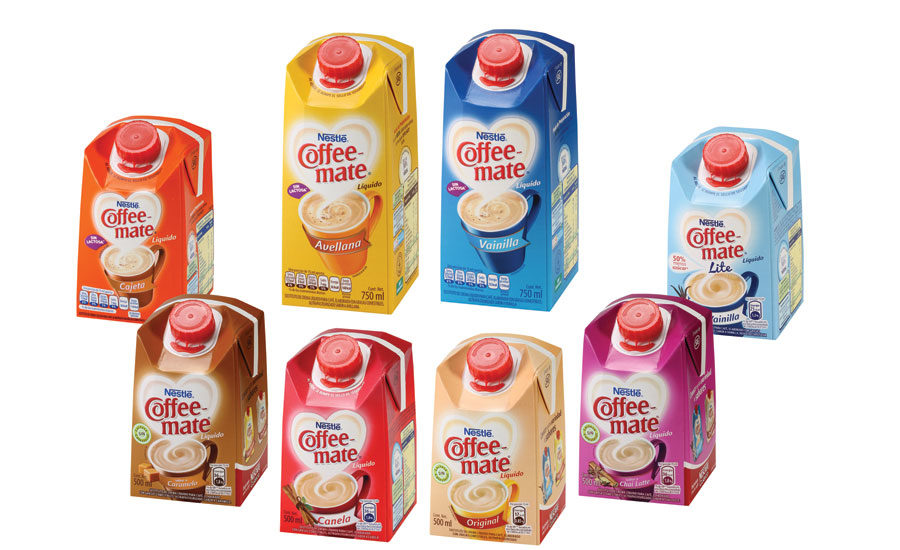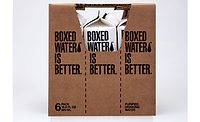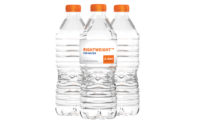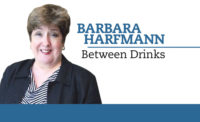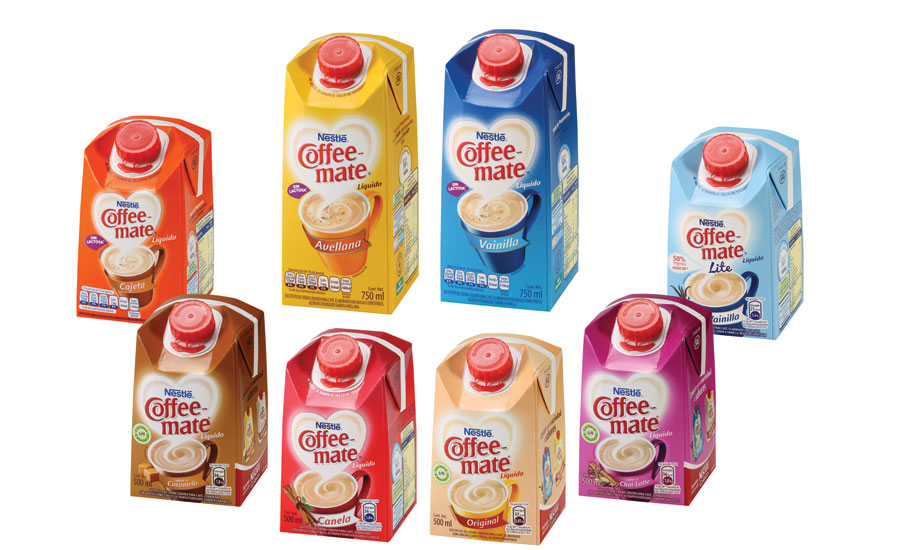As more consumers seek better-for-you beverage options, they continue demanding packaging that reflects their eco-friendly, healthy lifestyles. Eighty-three percent of Healthy Beverage Shoppers, those who choose beverages for health reasons, want more information about the ingredients, the eco-friendly attributes of the package and the brand itself, according to a 2015 EcoFocus Survey of 3,800 grocery shoppers.
EcoFocus’ April research notes that Healthy Beverage Shoppers are 61 percent more likely to think that beverages in cartons are a healthier packaging option. The research shows that 39 percent of these shoppers think that products packaged in cartons are better tasting, fresher and retain more nutrients over time than beverages in packaged bottles.
“Consumers are making a strong connection between their personal health and the environmentally friendly choices they make,” says Erin Reynolds, marketing director at Evergreen Packaging, Memphis, Tenn. “Shoppers are rethinking what they buy: it’s not longer just about the ingredients, it’s now about the packaging as well.”
She adds that refrigerated cartons are well aligned to what is most important to consumers. “They want to taste the beverage — not the package,” Reynolds says. “They want nutrient protection and freshness without preservatives. They want to recycle the package, and they want to use less plastic for both health and environmental reasons.”
Beatriz Callanta, market communication manager of North America for SIG Combibloc Inc., Chester, Pa., agrees. “These days, U.S. consumers look at packaging differently from the way they did five years ago,” she says. “More and more consumers are beginning to understand that packaging not only has a protective function, but it should also be a sound and workable choice in commercial and environmental respects.”
Packaging experts note that aseptic cartons provide an excellent packaging option, particularly for natural, good-for-you, organic and premium beverages. Cartons also provide beverage-makers with a high-value graphic space to build greater engagement with their customers.
“Cartons are helping brands expand into new channels and connect with new consumers,” says Tetra Pak Inc.’s Vice President of Sales and Marketing Eliseo Barcas. “A great example is that of millennials, who are gravitating toward cartons for their smart design, light weight, ease of storing unused portions and eco-friendliness.”
Consumer interest in clean labels has made its own impact on beverage packaging options, according to experts. “As consumers increasingly scrutinize products’ ingredients lists, we see a growing demand for beverages without added chemicals or preservatives,” Barcas adds.
Versatile packaging
As more manufacturers are releasing better-for-you beverages, packaging experts note that aseptic cartons can be a valuable asset.
“SIG Combibloc aseptic cartons, such as our smallest format, combiblocXsim, are perfect for all types of nutritionally enriched milks, juices and smoothies for reduced calories with added-value applications,” SIG’s Callanta says. “Among the fastest growing segments for added-value beverages are plant-based dairy alternatives, such as almond and soy milk drinks.
“The little carton packs can be fitted with convenient drinking straws, with a large diameter of more than 7 millimeters, so that even beverages with a thick or creamy consistency can be easily consumed straight from the package,” she continues. “Beverage-makers are able to use aseptic cartons, and offer their customers a modern, versatile packaging solution that promises plenty of options.”
Beverage packaging and product flexibility are key components to ensuring a brand’s success. For example, aseptic carton packs, like those used by Nestlé Mexico’s Coffee Mate coffee creamers, retain the flavor, aroma, color, nutrients and vitamins over an extended period of time without refrigeration, Callanta says.
Packaged in combitMidi 500-ml with the combiSwift screw caps, the lactose- and cholesterol-free creamers are available in 10 flavors and 500- and 750-ml sizes.
“Coffee Mate was originally offered as a powder, but in the summer of 2013, Nestlé Mexico added combitMidi to the packaging range and launched the liquid variant in an aseptic carton pack for the first time,” Callanta says. “Coffee Mate is now a best-seller in the category of coffee creamers, and is Mexico’s market leader.”
In addition to coffee creamers, aseptic cartons are a good fit for dairy and non-dairy products, flavored milk drinks, soy and almond beverages, and other non-carbonated beverages, experts note.
Tea also benefits from being packaged in aseptic cartons, according to Tetra Pak’s Barcas. “Today, most of the tea packaged in the U.S. is quite different than the simple ‘tea leaves plus hot water’ recipe brewed at home or commonly found at tea shops.
“While tea is naturally a low-acid beverage, most of it is produced in high-acid hot-fill plants, which requires beverage manufacturers to make significant modifications to the simple ‘tea leaves plus hot water’ product,” Barcas continues. “However, producers can avoid adding acid and sweeteners to balance the flavor, by using aseptic cartons. The result is a delicate, high-quality tea with a very short list of ingredients: tea and water.”
An eye on the environment
Experts say clean labels, eye-catching packaging design and the recyclability of packaging options are among the trends contributing to carton use and growth.
Seventy-eight percent of Healthy Beverage Shoppers want packaging that is recyclable, with 72 percent committed to buying beverages with less plastic in the packaging, Evergreen Packaging’s Reynolds says.
“Gable top cartons are a great option for consumers who value fresh and healthy beverages, which are responsibly packaged,” Reynolds says. “Cartons are
70 percent paper, which comes from a renewable resource, trees, from forests where responsible management practices are used and where overall growth exceeds harvest.
“Over 50 percent of the energy used to make the paper in cartons comes from renewable energy, biomass,” she continues. “In addition, cartons are recyclable for over 55 percent of U.S. households.”
Consumers also note the importance of recycling. According the EcoFocus Survey, 72 percent of Healthy Beverage Shoppers state that healthy beverage brands need to do a better job at providing alternatives to plastic packaging.
East Longmeadow, Mass.-based Northstar Recycling is helping businesses improve their corporate social responsibility by providing recycling solutions for all types of waste
“We don’t believe in the word ‘non-recyclable’,” said Noah Goodman, president of Northstar Recycling, in a statement. “We want to prevent companies and manufacturers from having tunnel vision when it comes to what a recyclable item looks like.”
Think outside of the box
Experts note that one of packaging’s latest innovations, bag-in-a-box packaging, offers consumers a modern, versatile packaging solution that also is 100 percent recyclable.
Pre-boxed wines already have increased their market presence. Franzia, which uses its WineTap package, saw sales of nearly
$325.3 million for the 52 weeks ending May 17 in multi-outlets, according to Chicago-based Information Resources Inc. In addition to Franzia, more wine brands are turning to bag-in-box packaging, such as Black Box Wine and Viama.
Spirits brands also are embracing the packaging format. In May, Milwaukee-based Griffon Brands LLC released Griffin Vault vodka packaged in the bag-in-a-box format.
The 1-liter boxes can be packaged, distributed and displayed more easily and are less likely to tip over than bottles, according to Bill Hersch, Griffin co-founder. Additionally, the box, made from 100 percent recycled materials and is more eco-friendly than bottles, with a 70 percent smaller carbon footprint, Hersch said.
Additionally, cartons can make it easier for brands to market themselves. “Brands are using cartons to differentiate their products on the shelf through right-sized packages and with eye-catching designs and bold, colorful graphics that clearly communicate to consumers,” Tetra Pak’s Barcas says.
“Tetra Pak cartons are fully printable and provide a billboard effect, allowing brands to present product information in a very visual manner with lots of impact,” he adds. “Our cartons are also made mainly from renewable resources: paper made from selectively harvested, re-grown trees.”
Experts note that cartons benefit consumers by delivering on convenience, functionality, quality and taste. Aseptic products in cartons also do not require refrigeration, saving beverage manufacturers energy — and money — during transportation and storage.
Filling flexibility
Although cartons have been used in the United States for about 25 years, aseptic carton packaging still is a relatively new package option for beverages, according to Barcas. “It can sometimes be more difficult for brands to invest in a new packaging format. While bottling systems have been there for a long time, new packaging requires investment in new capital equipment,” he says.
Barcas notes that contract packing (or co-packing) can be used by brand owners to lower costs and, therefore, barriers to entry, which fuels innovation. “Coconut water, in fact, was an innovation that was born in the co-packing network — and we all know how incredibly successful that category continues to be.”
Regardless of the type of packaging material used, experts stress that packaging speed and equipment versatility are important drivers of company success. For example, Evergreen Packaging’s EH-3 forms, fills and seals as much as 8,400 half-gallon cartons an hour. The machine is used for value-added products such as lactose free, soy and almond milks, and juices that still are in paper.
“Evergreen Packaging is a vertically integrated company, supplying liquid paperboard, printed and converted cartons, spout closures and filling machines,” Reynolds says. “We are committed to supplying our customers with total packaging solutions that are customized to deliver product freshness and brand distinction.”
SIG Combibloc uses filling machines that highlight product and volume flexibility. “Our combiblocXSlim carton pack is available in a total of seven volumes, 80-, 90-, 100-, 110-, 125-, 150- and 180-ml, all of which can be filled on the same high-speed filling machine, the CFA1224-36,” Callanta says. “The filling technology from SIG Combibloc combines high output with outstanding efficiency and flexibility.
“This enables us to fill a huge variety of products, from non-carbonated soft drinks (NCSD) and liquid dairy and dairy-alternative products, to creamier textures for smoothies or dessert sauces,” she continues. “SIG Combibloc also delivers the drinksplus concept, a system that opens up rapid and cost-effective entry to new product categories that are right in line with the prevailing health and wellness trend.”
Packaging experts predict an exciting future, both for new beverage formulations and its packaging.
“We’re seeing some exciting new products and formulations that are a perfect fit for cartons, especially clean-label products like tea and coffee drinks,” Tetra Pak’s Barcas says. “We’re also seeing lots of innovation in the nutrition category that’s reaching new consumer segments through a wide range of benefits.
“We will continue to work with our customers to understand their needs, so we can develop new innovations that add value to their businesses,” he says.
